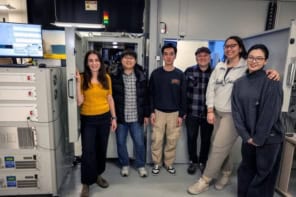
The first monochromatic beam of X-rays has been produced at a major synchrotron in the Middle East. Yesterday, engineers at the Synchrotron-light for Experimental Science and Applications in the Middle East (SESAME), near Amman in Jordan, sent monochromatic light through to a beamline for the first time, marking the start of operations at the facility.
“After years of preparation, it’s great to see light on target,”
Messaoud Harfouche, SESAME
SESAME has eight members – Cyprus, Egypt, Iran, Israel, Jordan, Pakistan, the Palestinian Authority and Turkey. The facility is a third-generation synchrotron light source that will be used by scientists in the region for a range of experiments from condensed-matter physics to biology. The synchrotron features an 800 MeV pre-booster ring that sends a beam of electrons to a 133 m circumference main storage ring that in turn boosts their energies to 2.5 GeV – a feat that was achieved earlier this year.
Two beamlines
The initial research programme at SESAME will be carried out at two beamlines: the X-ray absorption fine structure/X-ray fluorescence (XAFS/XRF) beamline, which will operate in a energy range of 4.5–30 keV and the infrared spectromicroscopy (IR) beamline that will work between 1 meV and 3 eV. While XAFS/XRF is operating from the first day, IR is scheduled to start later this year. “After years of preparation, it’s great to see light on target,” says XAFS/XRF beamline scientist Messaoud Harfouche. “We have a fantastic experimental programme ahead of us, starting with an experiment to investigate heavy metals contaminating soils in the region.”
SESAME currently has a beam current of 80 mA in the main storage ring but over the coming months that will be gradually increased to its design value of 400 mA.



